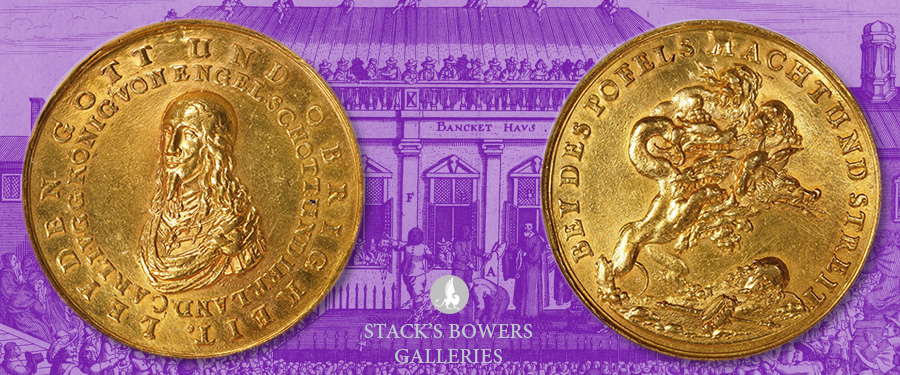
The relative peace and stability of the Elizabethan Era during the second half of the 16th century steadily gave way to increasing consternation between the crown and Parliament in the 17th century. Eilzabeth I died without issue, and in 1603 the English throne passed to James VI of Scotland, her first cousin twice-removed. The rise of the House of Stuart brought the Kingdom of Scotland under the umbrella that encompassed England and Ireland, as a personal union of one person—an aspect that concerned parliamentarians on account of the changes to long-standing tradition that it could usher in. Though these rising grievances, along with those of taxation, allowances to the crown, and religious freedoms, were generally held in check during the reign of James, they would reach their breaking point under the reign of his son, Charles I.
By the time of the accession of Charles to the throne, these concerns created what was seemingly constant conflict between Charles and Parliament, with events such as Charles’s marriage to Henrietta Maria, the Catholic princess of France, not making matters any better. The fourth decade of the 17th century saw the pressure mount further, with the outbreak of civil war in 1642. Charles and those loyal to the monarchy fought against forces aligned with the parliaments of both England and Scotland, with Charles eventually captured in 1645. Following an escape, recapture, and a refusal to acknowledge a constitutional monarchy, he was tried, convicted, and ultimately executed on the charge of high treason; his beheading sent shockwaves through the nobility of Europe.
What followed was the brief Commonwealth period, with the three former kingdoms declared as a republic under the Cromwells – father Oliver and later his son Richard – who acted as the “lords protector.” Ultimately, the monarchy would be reestablished, with Charles’s exiled and eponymous son returning in 1660. Though similar conflicts would force James II (the younger son of Charles I and the younger brother and successor of Charles II), into exile, the harmony that had been sought was finally realized following the Glorious Revolution and the installation of William (III) of Orange and his wife Mary II (the eldest daughter of the exiled king).
Our upcoming Global Showcase auction will feature in lot 32174 an exceedingly rare medal in gold that commemorates the slain monarch in the year of his execution (1649). While encountered in silver with some frequency, it is almost never seen in gold, making this offering a tremendous opportunity for advanced collectors of British historical medals, coins of the English Civil War, or world gold exonumia in general. Furthering its appeal is the rather gruesome depiction of a seven-headed beast upon the reverse. A composite mythical being with the snarling heads of many disparate animals, it stalks rightward with a hydra-like appearance, the toppled crown and scepter of Charles at its feet, along with the monarch’s severed head—a very powerful and dramatic image.
To view our upcoming auction schedule and future offerings, please visit StacksBowers.com where you may register and participate in this and other forthcoming sales.
We are always seeking coins, medals, and paper money for our future auctions, and are currently accepting submissions for our Official Auction of the 2023 NYINC next January and our Hong Kong auction next spring. Additionally, we are accepting submissions for our Collectors Choice Online (CCO) auctions, the next of which will be held in November, and the next for which we are accepting consignments will be held in February 2023. If you would like to learn more about consigning, whether a singular item or an entire collection, please contact one of our consignment directors today and we will assist you in achieving the best possible return on your material.





